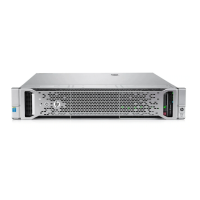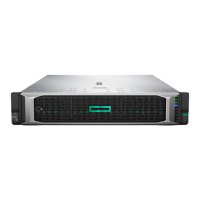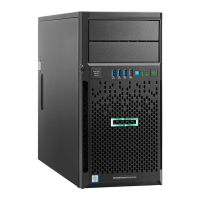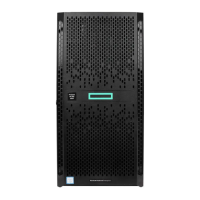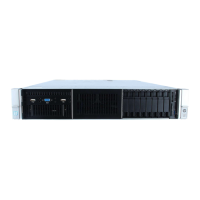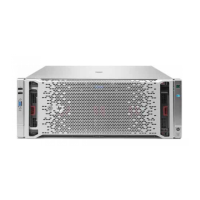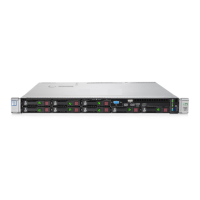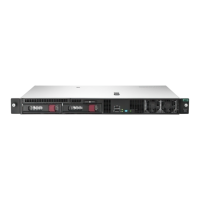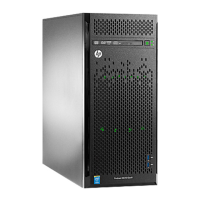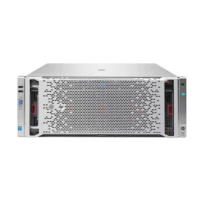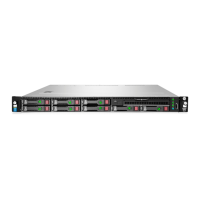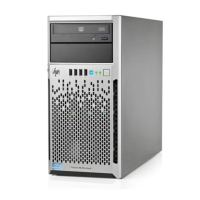Smart Array card, the setup defaults to RAID 1. HPE recommends selecting this option when
initially provisioning a server.
CAUTION:
Selecting this choice resets all disks (and arrays, if any are present). Because no arrays or
disk data are present during a first-time setup, this does not affect your server. However, if
you choose this option when reprovisioning your server, you can lose your data and any disk
arrays. For more information about the HPE Smart Storage Administrator, see the HPE Smart
Storage Administrator User Guide (http://www.hpe.com/support/SSA_UG_en).
• Customize—Opens the HPE Smart Storage Administrator (after clicking the right arrow) and
allows you to choose array settings. For more information about using the HPE SSA, see Using
HPE Smart Storage Administrator (HPE SSA) on page 38.
NOTE:
Some controllers other than HPE Smart Array controllers can be configured through HPE
Smart Storage Administrator.
4. Select the Target Controller you want to use from the drop-down menu if more than one is available.
5. Confirm Fibre Channel and iSCSI configuration settings.
If discovered, the Fibre Channel and iSCSI information is displayed at the bottom of the screen.
Intelligent Provisioning supports installation to iSCSI targets and to shared storage devices. Before
starting an installation, the devices need to be set up outside of Intelligent Provisioning, using options
that appear during POST, or through their setup applications. In addition, the boot controller order
needs to be set correctly in RBSU or UEFI System Utilities before installation
6. Confirm SD Card Configuration settings. If a supported SD card is installed, the device details appear.
7. Click the Continue right arrow.
Step 2: OS Selection
In this screen, specify the OS family to install and the installation method.
IMPORTANT:
If unsupported media devices, including SD cards other than HPE 32GB SD or microSD Enterprise
Mainstream Flash Media, are connected at this point, the following error appears: There are no
physical disks attached.
To resolve the issue, remove the unsupported media device, and make sure you have network
share information available, or a disk or ISO, FTP, or USB drive installed when prompted.
Procedure
1. Select an OS family. Available supported OS families include:
• Microsoft Windows
• VMware ESXi/vSphere Custom Image
Step 2: OS Selection 19
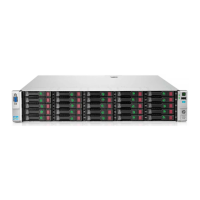
